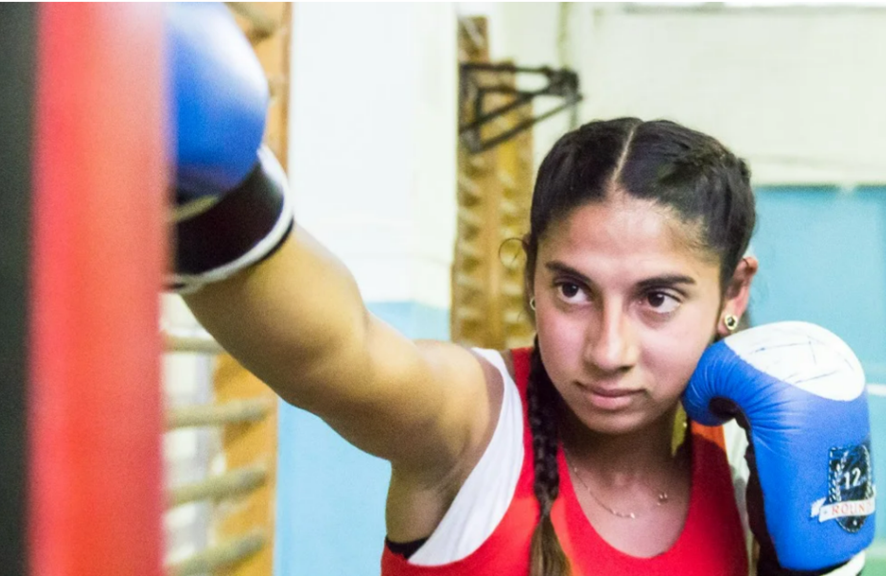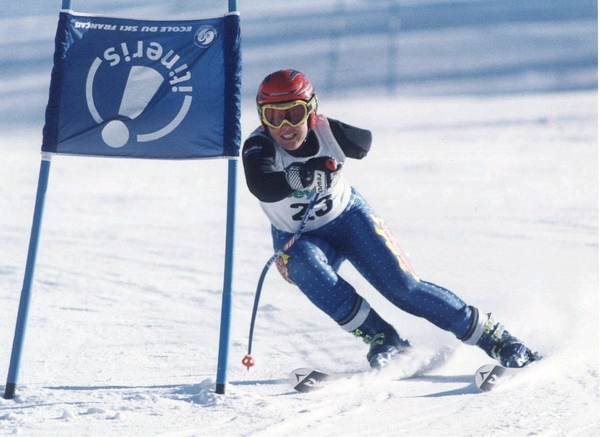Facts and figures: Women in sport

The world of women’s sports is undergoing a game-changing transformation, capturing unprecedented attention and recognition.
The Paris Olympics will be the most gender-equal in history. This milestone is a testament to the relentless efforts and remarkable achievements of women athletes who are breaking records, shattering stereotypes, and inspiring future generations.
Join us as we delve into the strides made toward gender equality on and off the field.
Girls and sport
- Sport is a great enabler to teach girls the skills they need to advance in life. Girls who play sports develop self-esteem, confidence, resilience, and learn to work in teams. They tend to stay in school longer, delay pregnancy, and get better jobs.
- Eighty per cent of female Fortune 500 CEOs played sports in their formative years, emphasizing the profound impact of early exposure to sports on women’s development and ability to reach their full potential.
- Ninety-two per cent of global audiences surveyed by Parity Now agree it’s important for girls to play sports growing up, with 61 per cent deeming it “very important”.
- Despite the evidence of clear benefits, by the age of 14 girls drop out of sports at twice the rate of boys due to several factors, such as social expectations, lack of investment in quality programmes, and more.
Media and women in sport
- Women’s sports are currently experiencing an unprecedented surge in attention, attracting both dedicated fans and investors.
- Approximately 35 female commentators have been hired by the Olympic Broadcasting Services for Paris 2024, raising the percentage of female commentators to nearly 40 per cent—a nearly 80 per cent increase compared to Tokyo 2020 and over 200 per cent from Rio 2016.
- The Women’s National Basketball Association in the United States is airing prime-time in 2024 for a second consecutive year.
- Women’s sports media coverage has tripled since 2019 after remaining stagnant for three decades at just 5 per cent to 16 per cent in 2022. If coverage trends continue at the current rate of growth, women’s share of coverage could reach 20 per cent by 2025.
- Social media conversation around women's sports increased to 18.5 per cent in 2022, marking a 2.53 per cent average annual increase in share.
- Women athletes wield significantly more influence compared to other types of influencers. Eighty-eight per cent regard pro women athletes as impactful role models for young women.
- Audiences of female sports are booming. The FIFA Women’s World Cup in 2023 was the most viewed women’s sports event in history with a global audience of nearly 2 billion viewers.
- The world record for the largest attendance for a women’s sports event was set in Lincoln, Nebraska on 30 August 2023, where 92,003 people packed a stadium to watch a volleyball doubleheader. The previous record of 91,648 was set on 20 April 2022 at Camp Nou in Spain when Barcelona's women's football players hosted Wolfsburg in the UEFA Champions League semi-final.
- Seven out of 10 people now watch women’s sports. Almost 73 per cent say they watch women’s sports at least a few times a year – not too far behind the percentage who watch men’s sports with the same frequency (81 per cent).
- Over half (54 per cent) of women’s sports fans only began watching within the last three years.
Pay, prize money, and sponsorship deals
- In 1973, tennis led the way to equal prize money when Billie Jean King founded the Women’s Tennis Association. Today all four major tennis tournaments offer equal prize money.
- Australia, Norway, New Zealand, and Brazil are among a growing list of national football federations that have committed to equal pay for men’s and women’s national teams. In 2022, the US Women’s National Soccer Team secured a landmark equal pay settlement after a years-long legal battle that secured an equal pay rate in all games, including the World Cup, going forward. The settlement also included USD 22 million to compensate players for past discrimination.
- In 2023 the Women's World Cup awarded $150 million in prize money, a 300 per cent increase over 2019, but still only about a third of the $440m the men got in Qatar 2022.
- The World Surf League (WSL) announced in 2018 that it would award equal prize money to male and female athletes for every WSL-controlled event in the 2019 season and beyond.
- The 2023 Professional Squash Association (PSA) Men's World Squash Championship awarded $500,000 in prize money to each gender, while the 2023 PSA Women's World Championship had a larger prize purse than the men's for the first time in the sport's history.
- The number of sponsorship deals in women's professional sports has increased more than 22 per cent year on year according to Sports United’s latest data.
- In 2024, Women’s National Basketball Association (WNBA) superstar Caitlin Clark secured an unprecedented sponsorship deal as a brand ambassador for sporting goods giant Wilson. Clark penned an eight-year deal with Wilson in April 2024, and another with Nike for $28 million under which she will also receive her signature shoe.
- Despite the many rapid gains, major gaps remain. Women athletes continue to struggle with fewer professional opportunities, a massive pay gap, fewer sponsorships, less airtime, and unequal playing conditions.
- The No. 1 draft pick in the WNBA, Caitlin Clark, is guaranteed a $76,000 salary in her first year. The 1 draft pick in the NBA gets $10 million.
- There were no women among the 100 highest-paid athletes in the world in the Forbes Magazine's 2024 list.
- A global sports salary survey conducted by Sporting Intelligence in 2017 showed that, among elite athletes, women earn on average only 1 per cent of what men earn.

Violence against women and girls in sport
- Women and girls experience violence across sport settings and environments and in various roles, including as athletes, coaches, reporters, therapists, referees, and fans.
- While efforts to track such cases are increasing worldwide, there are data gaps regarding the magnitude and prevalence of violence in sports. Nevertheless, available research, anecdotal evidence and accounts of real-life experiences highlight that women and girls from all cultures face violence in sport settings, ranging from harassment to sexual assault.
- When the Spanish Women’s National Team claimed their trophy after winning the 2023 FIFA Women’s World Cup, and one player endured an unwanted kiss from the President of the national football federation that official was suspended for three years by FIFA. The moment set off a movement in support of the women’s team and raised global awareness of the prevalence of such abuse in women’s sports. The case against the perpetrator is still being litigated in Spain. Abuses that players had complained about for years were never taken seriously until they were on display for the world to see.
- Safeguards designed to shield female athletes from sexual and psychological abuse are underfunded and frequently ineffective or are ignored altogether. While other well-resourced sport integrity measures tend to focus on curbing doping and match-fixing.
- Nearly 21 per cent of professional women athletes have experienced sexual abuse as a child in sport – almost double the rate of male athletes at 11 per cent.
- Widely publicized recent scandals have involved gymnastics, figure skating, swimming, synchronized swimming, soccer/football, basketball, water polo and taekwondo.
- Sports organizations have too often tried to cover up harassment and abuse to protect their reputations, as was the case with US Gymnastics. Due to the courage of survivors, they succeeded in securing a guilty verdict with multiple life sentences after decades of abuse by the team doctor.
Online harassment and abuse
- When women athletes do succeed, they regularly face a toxic backlash of abuse online and even in mainstream media. This is on top of the harassment and abuse that they face as they train and compete. And when they dare to speak out, too often they face severe retaliation.
- A World Athletics study found that 85 per cent of online abuse in the lead-up to and during the Tokyo Olympics was directed at women; 63 per cent of identified abuse was directed at just two athletes – both black and female.
- A follow-up study of Twitter and Instagram conducted during the World Athletics Championships Oregon22 found that 40 per cent of abusive posts were sexualized or sexual abuse, overwhelmingly directed at women.
- BBC – conducted a third survey of elite women athletes – over 30 per cent of them had experienced serious abuse online. BBC has now taken steps to address this in its own social media channels – in addition to stepping up its commitment to more airtime for women’s sports.
- In response to the abuse recorded during the Tokyo Olympics, the International Olympic Committee has implemented a cyber abuse protection service at the Olympic and Paralympic Games Paris 2024 available to all competing athletes who have public-facing social media channels.
Women in leadership roles in sport
- Women’s leadership in sports is critical to driving investment and improved sports policy related to gender equality objectives. There has been notable progress in the past decade, but gaps remain.
- In the International Olympic Committee, 41 per cent of IOC Members are female – 100 per cent more than in 2013 – with more diversity in terms of age and regional representation.
- Gender-equal representation on IOC commissions was reached in 2022 and maintained in 2023, a historic high that equates to a 100 per cent increase since 2013. Fourteen of the 33 IOC commissions, 42.4 per cent, are led by female chairs; 33 per cent of the members of the IOC Executive Board are women.
- At Tokyo 2020, only 13 per cent of coaches were women.
- According to the Sport Integrity Global Alliance’s most recent survey in 2023, only 26.9 per cent of executive positions in international sports federations are held by women. The same study reported that of the 31 International Sports Federations surveyed just three had women at the helm. Out of 206 National Olympic Committees, only 24 are chaired by women.
- FIFA had no women on its Executive Committee for over 100 years. In 2016, FIFA appointed its first female General Secretary. In 2018, FIFA launched its debut global strategy for the women’s football division and in 2019 FIFA committed USD 1 billion to the women’s game.
- By 2026, each of FIFA's 211 member associations (MAs) will have at least one woman on their executive committee. As of May 2024, 83 per cent of MAs already had at least one female executive committee member, up from 64 per cent in 2019.
- The International Surfing Association is a pioneer in its efforts to boost the representation of women in judging positions. Through its women’s judging program, established in 2020, the ISA is promoting women in this field.










































































































































































